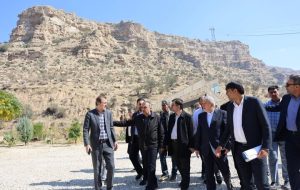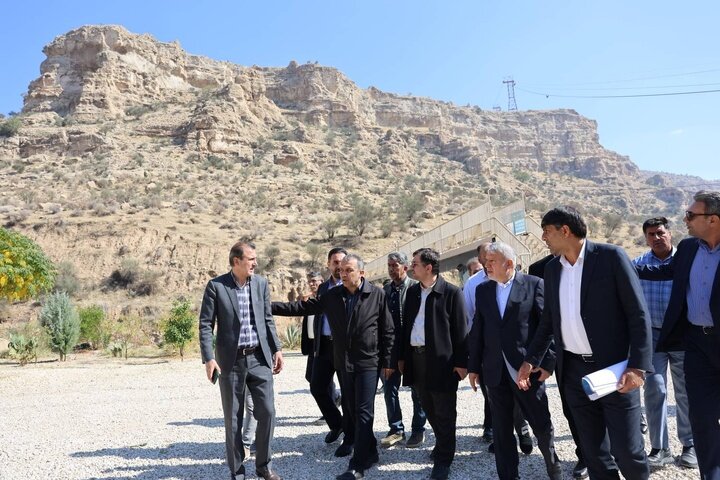Tourism minister visits historical sites in Firuzabad of Fars province
SHIRAZ – On Friday, the Minister of Cultural Heritage, Tourism, and Handicrafts, Seyyed Reza Salehi-Amiri, visited a number of historical sites and structures in Firuzabad county in southern Iran. This visit was part of his broader tour across Fars province, focusing on Firuzabad notable cultural sites and historical landmarks within the ancient city of Meymand,


SHIRAZ – On Friday, the Minister of Cultural Heritage, Tourism, and Handicrafts, Seyyed Reza Salehi-Amiri, visited a number of historical sites and structures in Firuzabad county in southern Iran.
This visit was part of his broader tour across Fars province, focusing on Firuzabad notable cultural sites and historical landmarks within the ancient city of Meymand, about 120 kilometers south of Shiraz.
During his visit, Salehi-Amiri explored several key sites in Meymand, including the nationally registered Jameh Mosque, dating back to the Qajar era, as well as the Imamzadeh Esmaeil Shrine, an old public bathhouse, and the Meymand Anthropology Museum.
The minister underscored the need for conservation efforts, particularly for the historical bathhouse, which serves as an anthropology museum. He underlined that a restoration project is needed to begin for the bathhouse, ensuring that its original layout and design are preserved.
The minister also took time to tour a glassblowing workshop in Meymand, highlighting the city’s rich potential in handicrafts and traditional industries. Notably, he recognized the importance of rose and rosewater production, which is a central feature of Meymand’s local economy and a significant attraction for tourists.
Talking to the minister, several people in Meymand presented various investment proposals to expand the rose and rosewater industry, as they underscored its importance to boost domestic tourism for the region.
Salehi-Amiri also visited some other regions of Firuzabad such as the famous Qaleh Dokhtar, a defensive fortress built by the founder of the Sasanian Empire to protect its first capital.
Recognized as a national heritage site since 1937, this historical structure remains a vital part of Firuzabad’s cultural landscape. During his visit, the minister emphasized the need to facilitate public access to the fortress and enhance visitor experiences.
He also suggested to use of the area’s cable car system based on based on thorough research and expert analysis to improve accessibility to Qaleh Dokhtar and attract more tourists to the region.
The minister further expressed the ministry’s commitment to preserving these historical sites, welcoming well-structured proposals for maintaining and promoting Iran’s cultural heritage.
Firuzabad was named the city of Gor in the ancint times. When the Achaemenid period was came to an end, it was destroyed by Alexander the Great. Centuries later, Ardashir I, the founder of the Sassanid Empire, revived the city before it was ransacked during the Arab Muslim invasion of the seventh century. It was again revived by the Buyids under Fanna Khusraw, but was eventually abandoned in the Qajar period and was replaced by a nearby town, which is now Firuzabad.
Firuzabad is home to many UNESCO-tagged relics and sites as well. In 2018, UNESCO added an ensemble of Sassanian historical cities in southern Iran — titled “Sassanid Archaeological Landscape of Fars Region”– to its World Heritage list. The ensemble comprises eight archaeological sites situated in three geographical parts of Firuzabad, Bishapur, and Sarvestan. It reflects the optimized utilization of natural topography and bears witness to the influence of Achaemenid and Parthian cultural traditions and Roman art that later made a significant impact on the architecture and artistic styles of the Islamic era.
AM
